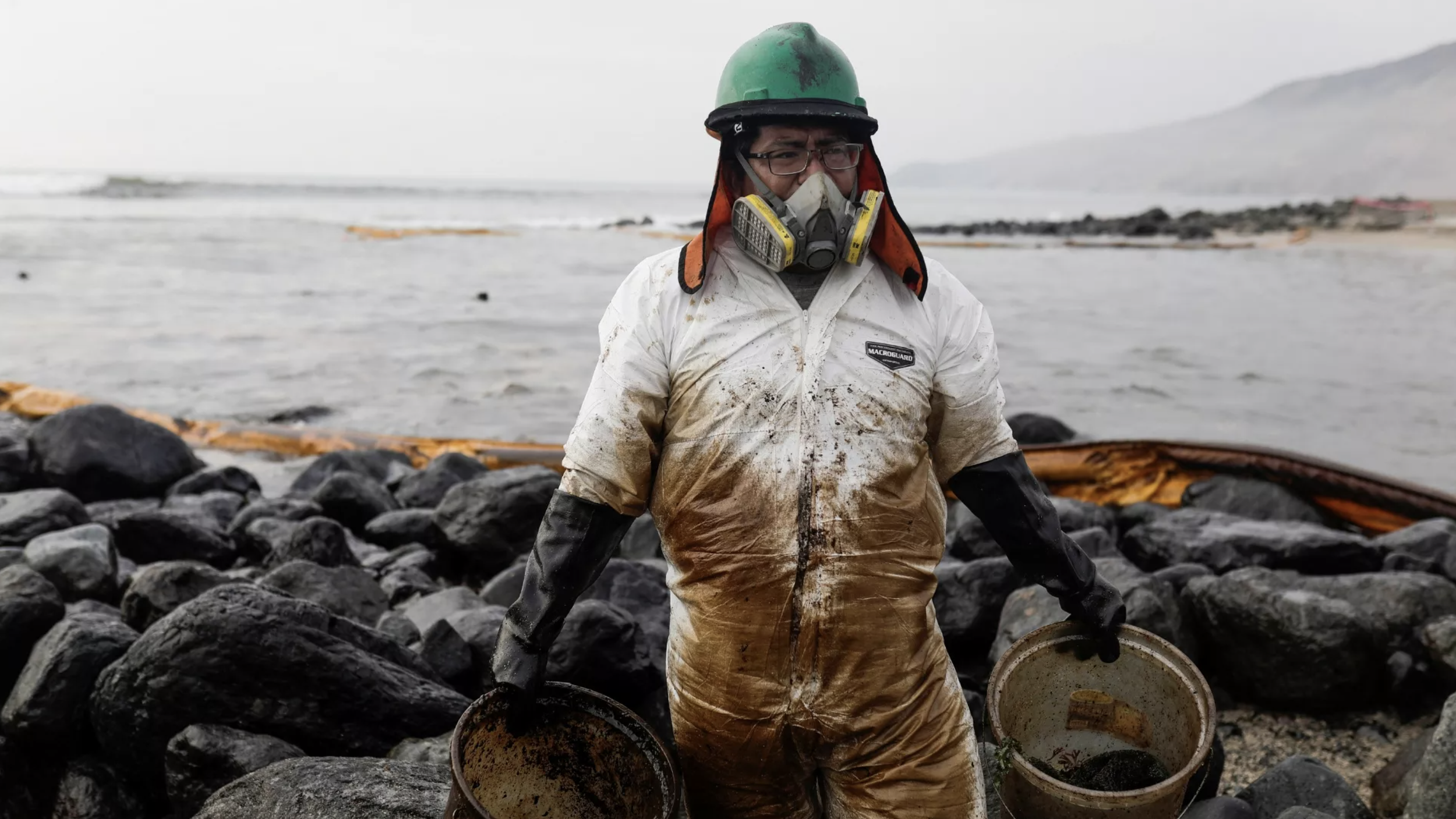Sport on the Climate Frontlines: Big Oil in the Amazon
We need sport more than ever. Amidst a worsening climate crisis, sport can hold communities together and bring joy, routine, challenge and excitement. It is a deeply human collective endeavour. Whatever future we get, these are qualities that we need. Cool Down Sport For Climate Action is collecting sporting tales from the Climate Frontlines and giving a platform to the voices that are often missing.
Cool Down’s Matt Rendell reporting from COP16, in Cali, Colombia.
The Comunidad Nativa “Andres Avelino Cáceres” is an indigenous village of 150 Kichwa in northern Peru, close to the Ecuadorian border. Lost in the rainforest, it is almost impossibly remote. It takes two days in a motor boat along the sinuous Río Tigre (Jaguar River) to reach a modern road, and then it is a car journey lasting many hours to the nearest major town, Iquitos.
Founded on 26th November 1990, the village celebrates its birthday every year with a football tournament. Teams of every age flood in from the other Kichwa settlements – the Comunidad Nativa 12 October, with its 2000 villagers, and 300 strong San Juan de Bartra – flock together for what must be one the world’s most remote sporting competitions.
By coincidence, 26th November is also the birthday of the community leader Robisan Huali. In October 2024, he made the gruelling journey to Iquitos, and then flew, via Lima and Bogota, to Cali, Colombia to attend COP16, the international conference on biodiversity.
He told me, proudly, “We don’t get a fee to come to COP16, but we do get an expenses allowance. I’m using mine to buy football kit for the kids in my village, so that they are properly dressed at the tournament.”
Football is the universal game, and I wondered if there were any young Kichwa talents ready to burst into the professional ranks. Robisan shook his head, and gave this chilling reply.
“Unfortunately, our communities suffer from extremely poor health. A medical team visited the community three years ago and found that we were suffering from extremely high levels of lead, arsenic, cadmium and mercury in our body tissues.”
Exposure to these heavy metals is linked to cardiovascular and neurodegenerative risks, including high blood pressure, hypertension, coronary dysfunction, myocardial infarction, cardiac arrhythmias, stroke and atherosclerosis.
Robisan Huali, COP16
If sport is a right for all, it seems that it is being denied the Kichwa of northern Peru. But why?
The Comunidad Nativa “Andres Avelino Cáceres” has the misfortune to stand in the heart of Block 192, the largest-yielding oil field in Peru. Extending across the Tigre, Corrientes, Pastaza and Marañón river basins in the remote Loreto province, it accounts for 17 percent of the country’s production.
When oil extraction started there in the 1970s, the US oil company Occidental Petroleum, also known as Oxy, started operations.
His clothing adorned with jaguar motifs, Robisan told me a harrowing story.
“When I was a child, it was beautiful. We cared for the animals and plants. Culturally and socially, it was a paradise. Then, one day, a tide of black mud swept down the river. We had no idea what it was. We played in it and used it as face paint. It was the first of literally thousands of oil spills that have poisoned the water we drink and the food we eat.”
The concession, and the indigenous populations who live there – not just Kichwa but Achuar, Kukama and Quechua, whose food production and development depend directly on the water supply of the Tigres, Corrientes, Pastaza and Marañón river basins – has been passed between oil companies since the 1970s. Occidental was replaced by the Argentina-based Pluspetrol Norte. Then the Canadian Frontera Energy (formerly Pacific Exploration and Production) came in, giving way to nother Canadian concern, Altamesa Energy, in July 2024.
In that time, repeated oil spills have destroyed the fauna and flora and endangered the life and health of the indigenous communities.
Robisan told me, “We have seen literally hundreds, perhaps thousands, of oil spills, and they are never cleared up.”
Peruvian sports lovers have already seen one of the most egregious instances of sportswashing imaginable. In January 2022, the Italian oil tanker Mare Doricum was unloading crude oil into the underwater pipes of the La Pampilla refinery, operated by the Spanish company Repsol. Around 12,000 barrels of oil were spilled.
The damage was astonishing. The spill impacted two protected areas of great importance. The lives of around 10,000 people, who depended directly on the sea for their livelihoods, have drastically changed. Repsol’s slow reaction to contain the spill brought international condemnation, as did the Peruvian government’s reluctance to apply sanctions.
Then, in 2023, Repsol assumed sponsorship of the Peruvian national football team. Many Peruvians saw the National jerseys with Repsol written on them and thought it was a joke, and a pretty sick one at that.
The indigenous people at COP16 say that the only difference between that coastal spill and the hundreds that take place in the forest every year was that it was plainly visible, so the world took notice.
The medical study which revealed the heavy metals concentrations in Kichwa villagers concluded damningly for the oil industry, “The observed pattern of high concentrations for all metals supports anthropogenic sources of contamination, including oil extraction activities.”
Robisan Huali told me, “For us, the extraction of fossil fuels in our region means the criminalisation of our territories, because, according to our traditions and cosmovision, they are destroying our Earth-mother, the Pachamama, who gives us life. We have our forest food, our medicines, everything, but when the fossil fuel companies come in, they threaten everything: our social life and our politics. We are losing everything.”
“I’m against sport sponsorship by petrol companies. They want to give the appearance of being marvellous, but we see the reality - and the entire industry has no credibility.”



